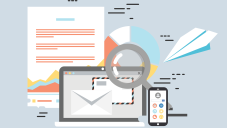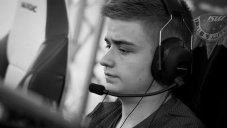See What Your Dog Would Look Like As Another Animal With This AI Tool
Dhir Acharya - Oct 31, 2019

Nvidia has a new AI-powered tool called GANimals that helps you see what your pet looks like as another animal.
- 4 Ways AI Could Change The Mobile Gaming Industry
- New ‘Deep Nostalgia’ AI Allow Users To Bring Old Photos To Life
- Pilots Passed Out Mid-Flight, AI Software Got The Aircraft Back Up Automatically
Nvidia has a new tool called GANimals that helps you see what your pet looks like as another animal. Earlier this year, the company introduced its new AI drawing tool dubbed GauGAN, which turns sketches into near photorealistic pictures. With this tool, users are required to indicate which parts of the image are mountains, trees, water, as well as other landmarks by selecting the right brush color. However, GANimal is 100 percent autonomous, which means users just need to upload a picture of their pet and the tool will produce a set of photorealistic pictures, all of which appear to feature the pet’s expressions.

As described by the researchers in a paper, the tool relies on FUNIT (Few-shot, Unsupervised Image-to-image Translation), an algorithm they have developed. The AI needs training on a lot of target images, with different light levels as well as camera angles, to generate accurate results that look genuinely like the source and targets have been merged properly.
Nevertheless, it takes a lot of time to put together such a large database and it limits the capabilities of the translation network. For example, if you train it turn a chicken into a turkey, it will only be able to do that.

FUNIT, on the other hand, can be trained with only some images of a target animal that it practices with repeatedly. As a result, it can generalize the translation required for merging two images. Once the training is done, FUNIT needs only one image of the target animal and the source, both of which can be 100% random and never analyzed or processed before, to do its job.
GANimals is available for use at AI Playground, but the results are now still in low resolution and you can’t likely use them for any other purposes. However, the researchers hope to improve the tool so that the algorithm can eventually swap faces without needing large databases with carefully curated images.
Featured Stories

Features - Jan 23, 2024
5 Apps Every Creative Artist Should Know About

Features - Jan 22, 2024
Bet365 India Review - Choosing the Right Platform for Online Betting

Features - Aug 15, 2023
Online Casinos as a Business Opportunity in India

Features - Aug 03, 2023
The Impact of Social Media on Online Sports Betting

Features - Jul 10, 2023
5 Most Richest Esports Players of All Time

Features - Jun 07, 2023
Is it safe to use a debit card for online gambling?

Features - May 20, 2023
Everything You Need to Know About the Wisconsin Car Bill of Sale

Features - Apr 27, 2023
How to Take Advantage of Guarantee Cashback in Online Bets

Features - Mar 08, 2023
White Label Solutions for Forex

Review - Jul 15, 2022
Comments
Sort by Newest | Popular